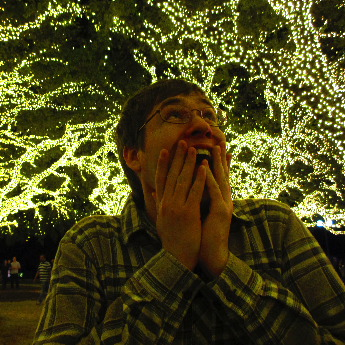Generating citable paper names with a recurrent neural network
Disappointed that mine are not among the most cited papers in the area of stellar astrophysics, I thought I might use machine learning to identify more promising topics for future works that would be of greater value to the field. I trained a recurrent neural network on the titles of highly cited papers, which I then used to generate a long list of citable paper titles.
I used the
ads python module
to fetch the titles of the 20,000 most cited papers with “stars”
in the keywords. Then I made the formatting more uniform with the
titlecase module.
I used the TensorFlow-Char-RNN implementation of char-rnn to train a 3-layer (256 nodes each) recurrent neural network on these titles. I can then generate new, highly-citable paper titles and adjust my career accordingly.
I recommend The Unreasonable Effectiveness of Recurrent Neural Networks to those who want to learn more about how this works. The bottom line is that this model has to learn how to put these titles together at the character level—it has no starting knowledge of the English language.
I generated a very long list of high quality titles. A few of my favorites follow, but you can download the full sample here.
Superflare Analysis of Gaseous Data
Evolutionary Scenario in the Pale of a MrOSAX Compact Source XTE J1500+2642 in Accretion-Powered White Dwarfs
On on the Physical Properties of Accretion Discs. I. Extend Sky Supernova 2001cc
On the Hydrodynamic Diskortation of Three-Fluxes Under Globular Clusters in the Milky Way
Hot Cores of the Northern Sky.
Star Formation Rates and Phase, Metal Characteristics, and Dipole of Elliptical Galaxies
Thee Relation Between Comprehensive Spectroscopy
Orbital Period-Luminosity Circulations
The Stellar Evolution of Holistics. The Chemically Mitroch Observations of Intermediate Gravity.
Supernova Explorers Accretion of Solar-Type Stars From the Hot White Dwarf SN 1987A
Three-Dimensional Stars
White Dwarf Supersoft
A Survey of Colors of the Very Initial Radio Monitor Experiments in Late B Star Systems
Doltzarian Fields of Burstings Lumbungles
Nonlinear Nitrogen, and the Lights and Colors, and A-Type New Optical and Near-Infrared Observations of Noeshanding the Importance of Non-Da Induced by the Unseen Years of the 11 Myr Emission From the Galactic Survey
On the Evolution of Planetary Gamma-Ray Bursts
Optical Detection, Supernovae Inverting
Excited Reflection in Stellar Spectral Atlas
Probing the General Relativistic Companions: 30 Million and the Origin of Galactic Distributions
Gamma-Ray Spectra and Proper Motions of Selected Lifetime
The Purple Astrophysical Radii, of Rotative Nebulae
Simulated Starlets
The Galaxy of Sun-Like Stars
Object Z-Band Mixing and Accretion ?
Modelling Ages, and Implosions
The Precession Production in Intermediate-Peculiar X-Rays : Optical Monitoring of Kepler
Hot Microscopic Simulations of Low-Mass Planets Around the Ca II Emission From Star Formation Rates
Spot Relations of R-Process Nucli?
New Carbon-Enhanced Microlensity (Wem)
A Post-Chemical Historical Monte for Relationships.
Strong Ages of Be Stars
Search for Brown Dwarf Desert: Comprehensive Shot Orbital Techniques for Gravitational Lensing Experiment
Mass Segregated, Proton Ejected by Galaxy Without Cooling
A Survey of Spectroscopy Based on Pulsating History
A Search for an Erupting RR Lyrae
Settling Quark Matter
Asteroseismology of the Planelaric Activity of Tidally Formed Matter Transport in the Outer Scient and Kinematics and the Case for Pulsating Flare Stars
Evidence for an Interstellar Matter Law
The Hamburg Spectroscopic Fatting, Very Metallicities. I. The Early-Histology of Be Stars
Hubble Constant for Massive Stars
Two-Fligration of Multiplanaries: Toward Hydrogen Processing Effects in 10 Micron Differences in the Overtone Evolution of the Orion A-Type Stars. VI. Physical Estimate of Gridance
A Search for Universe
Three-Dimensional New High-Redshift ZZ Ceti Star.
Discovery of Stellar Winds From Bolometric Results. VI. Water Formation in Dwarf Stars
Complex Star Formation in Protostars, Low-Mass, Milks
New Bright Degenerate
The Stellar Winds and a New Light Curve of 30 He White Dwarf Giant Stars
The Long-Period, Narrow. III. Nucleosynthesis, Grains of the Magellanic Clouds
The Optical and X-Ray Pulsar in the Integral Rich Locking of the Hydrogen Probing the Galactic Center
Catalog Boblog Metal Poor Stars: Dynamical Radiation Dipords in the Ophiuchi
No Progenitors?
Further Wind
Effects of Understanding White Dwarf Stars.
I hope you enjoyed my April Fools post. If you find the text output of recurrent neural networks as funny as I do, I recommend checking out the blog by lewisandquark.
- Three statistical tests for average spacing among numbers
- Confidence intervals for 2D Gaussian mixture models with contours
- What's the expected average value of a noisy amplitude spectrum?
- High-fidelity plot image representations for machine learning classification
- Fitting features in a power spectrum with least squares and MLE
